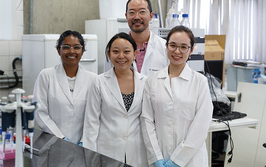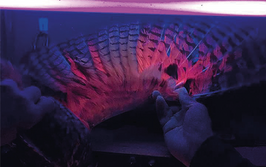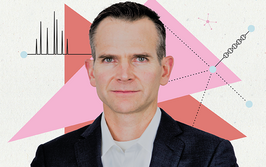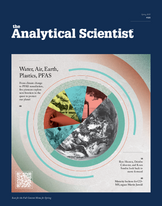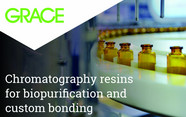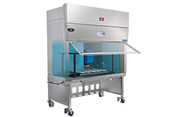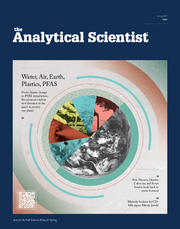
What If Computers Could Smell?
Computers can “see” and “hear,” but fully digitizing scent has so far eluded science – but that may soon change
James Strachan | | 13 min read | Discussion
In 1957, NIST computer pioneer Russell Kirsch created the first digital image – a scan of Kirsch’s three-month-old son Walden. Kitsch had wondered what would happen if computers could look at pictures – if computers could “see.” The notion of digitizing sense goes back even further. In the 1930s, Harry Nyquist laid the foundation for converting sound into a digital format; and in the early 1950s, The Audrey System, developed by Bell Labs, could recognize spoken digits. We see the results of digitized sense all around us: satellite imaging, facial recognition software, electronic music, voice-to-text and text-to-voice translation services, and so on. But if computers can “see” and “hear,” why shouldn’t they be able to smell?
Electronic nose technology goes back to the 1980s and consists of head space sampling, a chemical sensor array, and pattern recognition modules, to generate signal patterns that are used for characterizing odors. But smell has not been fully digitized in the same way sight has. There’s no universal “odor code” similar to pixels that universally describe colors. A computer cannot yet read and analyze smells digitally.
Osmo, a company spun out of the olfaction group at Google Brain, is trying to change that. Just as Kirsch was able to digitally store and reproduce the image of his son, Osmo wants to be able to digitally store and reproduce scents – perhaps even the scent of a baby.
“The idea is that we take an odor at point A, digitize it, and then reproduce it at point B. This involves first reading the odor at its original location, mapping it through our model, and then ‘printing’ it in a different location,” says Laurianne Paravisini, who heads up Osmo’s analytical chemistry department. Interestingly, that reproduced scent wouldn’t necessarily be made up of the same chemical compounds as the original sample.
“It’s a process we describe as ‘deformulating’ and then ‘reformulating,’ says Paravisini. “The model analyzes the compounds initially present in the odor and then proposes a different set of molecules that can recreate the same smell, based on our principal odor map. For example, you might start with 50 molecules from the original odor, and the model generates another formula with different molecules that still smells the same. So, while the chemical composition changes, the odor remains identical.”
How I Ended Up at at Osmo
With Laurianne Paravisini
I was originally trained as an analytical chemist. I started my studies in France in analytical chemistry, and then I transitioned into the world of odors and flavors. During an internship, I worked on odor emissions from car seats, which is important for consumer purchases – what your new car smells like. It also has health implications regarding the compounds being released. I was fascinated by how much what you smell impacts your everyday life, often without you even noticing.
So, I decided to continue my studies in flavor and fragrance chemistry. In France, we’re fortunate to have a couple of strong programs in this field. I earned a master’s degree in flavor and fragrance chemistry and then completed a PhD in flavor chemistry, where I learned both analytical and sensory science.
After that, I moved to the United States to continue academic research on flavor at the University of Minnesota. I am passionate about how your sense of smell influences so many aspects of life – what you eat, why you purchase certain foods, and ultimately your health. For a couple of years, I studied flavor perception at molecular and sensory levels – such as identifying compounds that drive attributes of coffee quality or bread preference, aspects that are often challenging to understand.
In 2020, I joined Beyond Meat in California, to grow their flavor research and creation program. The goal in flavor research is to understand which compounds drive specific flavor attributes – a much harder task than it might seem. Food composition is incredibly complex. You have large molecules that influence texture and taste, like sweetness or bitterness, and small molecules that create aroma – sometimes hundreds of them, depending on the food's complexity. Making sense of this and translating it into actionable insights for product development is really challenging.
After Beyond Meat, I briefly joined International Flavors and Fragrances (IFF) to lead global flavor innovation for plant protein. I then discovered Osmo, whose mission resonates with me – much like flavor research. There aren’t many tech companies interested in building an analytical science department – so I was immediately intrigued.
If we can digitize smell, we can solve many problems and reach so many people. The team is incredible, and Alex Wiltschko, our CEO, is deeply passionate about the mission. So, I joined Osmo to be the analytical chemistry voice and give computers a sense of smell. The team is growing and we are always looking for new analytical chemistry talent.
A plumb with aplomb
The gold-standard for volatile analysis is gas chromatography-mass spectrometry (GC-MS), which is large, table-bound, and requires high vacuum and gas supplies. “Our goal is to miniaturize this technology into something closer to coin-sized equipment, which is a significant analytical challenge,” says Paravisini.
Another big challenge is collecting high-throughput data that can be used effectively by machine learning engineers. “We don’t talk enough about how complex this process is,” she says. “Though we’ve made great strides in volatile analysis – such as advanced GC separations, fast GC, innovative stationary phases, and diverse mass spectrometry detection methods – the real difficulty lies in generating enough usable data for AI and ensuring it’s accessible to the team.”
Osmo has developed tools to handle complex chromatograms, deconvolute them, and provide compound lists in minutes. This is critical because, even with state-of-the-art molecular identification, analysts often spend weeks sorting through data. Osmo is working on solutions to make data more accessible and usable globally, representing it in ways that streamline workflows.
Another challenge is capturing the right volatiles efficiently and in high throughput. Although analytical chemists have become proficient at separation and detection, sampling itself is still a bottleneck, according to Paravisini. “Innovations in headspace sampling are needed to make this process faster, higher throughput, and more representative of the sample, as analytical data forms the foundation of our models,” she says.
Another interesting aspect of Osmo’s work is how analytical chemists and AI teams approach data collection differently. Analytical chemists traditionally optimize methods around complex samples to ensure comprehensive preparation and separation. AI, on the other hand, starts with simple samples to understand the basics before building complexity. “This inverse approach means we’ve had to rethink how we collect data,” says Paravisini. “We’ve run thousands of GC-MS analyses, generating data tailored for AI rather than traditional analytical workflows.”
In 2023, Osmo published a key paper in Science (1) that outlined its first principle odor map (POM), which uses AI to digitize molecules and predict their smells. More recently, Paravisini tested their odor "teleportation" process with a real-world example. They captured the headspace of a prune plum, fed the data into their models, and used AI to generate a formula to recreate its odor – without human intervention. “The recreated odor, made by mixing specific molecules, was remarkably close to the original plum. While this is just the beginning and there’s much more to refine, it was a promising step forward.”
The Analytical Scientist Presents:
Enjoying our content? Join a growing community of like-minded individuals with the hottest topics at your fingertips, specially curated by our Editorial team.
The nose knows – for now
“We’re still at least a couple of years away from having a smartphone-sized GC-MS-type technology that can feed readable data into a machine-learning algorithm,” says Paravisini. “But we are making progress – and innovation doesn’t always follow a straight line.”
In the meantime, Osmo is focusing on applying the technology to other areas. For example, they’re working with the fragrance industry to help reformulate existing products and make them more cost-effective, sustainable, or health-conscious. In fact, Osmo recently launched its own fragrance house, Generation by Osmo.
Fragrance formulas often contain 80 to 100 materials, some of which are restricted, expensive, or raise sustainability concerns. “Using our technology, we can reformulate these fragrances to meet specific needs, such as lowering costs, improving health properties, or enhancing biodegradability, all while maintaining the original scent profile,” says Paravisini.
To do this, Paravisini’s team must collect data from fragrances using different instruments. One difficulty is ensuring that data from various instruments – each with different ionization methods and slight day-to-day variations – can all feed into the same model. “We capture data on a given fragrance across several instruments, process it through the odor map, and generate a new formula. Typically, the result is much simpler than the original formula.
“The recreated fragrance remains in the same ‘odor space,’ meaning it captures the essence and backbone of the fragrance – its base, middle, and top notes. However, right now, it’s not a perfect match. The intricate details that make well-known fragrances distinct are often missing. While we’ve made good progress, there’s still work to be done to reach the kind of precision to fool an experienced sensory evaluator – or ‘nose’ as they’re known in the fragrance industry.”
Osmo is also running an ingredient discovery program using the odor map and models to identify new molecules and structures. The team recently released three completely new molecules – structures that have never been smelled before. “It’s fascinating to see something so tangible emerging from this work,” says Paravisini. “Unlike many startups that operate on ideas without visible results for years, we already have molecules that you can smell and use.”
So, although we’re not at the stage where you can capture smells with your phone in the next few months, Paravisini believes we’ll see rapid progress in related applications very soon. “The development curve for this technology is steep, but it’s moving fast, and the breakthroughs along the way are incredibly promising.”
“Bits and atom people”
Osmo has an interdisciplinary team that includes sensory experts, a large lab operation to prepare and collect data on samples (starting with single molecules and then moving to complex mixtures), and AI/computer scientists working on the models. But communication can be a challenge, according to Paravisini. “As an analytical chemist in a tech environment, you’re constantly translating your work – explaining what you’re seeing or doing in a way that people from different backgrounds can understand. At the same time, you’re learning their ‘language,’ especially the tech jargon, which has been a fascinating process for me.
“At Osmo, we often talk about the ‘atoms and bits’ people – the chemists and scientists working with physical matter and the tech experts working with data and models. What’s amazing is how these two worlds intersect. The ‘bits’ side generates new molecules, for example, through our models, while the “atoms” side works to synthesize and test them. It’s a two-way exchange of ideas, and that’s what makes it so fascinating.”
Paravisini believes these different vantage points can help solve problems. “There’s always someone looking at the issue from a completely different perspective,” she says. “For example, while I might approach a challenge in a very traditional, partitioned way, a colleague from the tech side might approach it with an entirely different framework.”
Osmo’s team of sensory scientists add another layer of expertise and perspective. “The collaboration between analytical chemists, tech experts, and sensory scientists creates a unique, fast-paced, and highly innovative atmosphere. It’s a stimulating and inspiring environment to be in.”
Osmo also recognizes the value of collaboration with external experts from both academia and industry – especially when it comes to developing miniaturized sensor technology. “Our approach is less about inventing the technology ourselves and more about identifying existing technologies or innovations and partnering with the best in the field to couple them with our AI power.”
Will digital olfaction become normal?
Paravisini believes that the tools and AI advancements being developed now are going to fundamentally change the way analytical chemists work. “If they don’t, I think we’ve missed an opportunity,” she says. “Too many chemists are still analyzing data the same way they have for 10 or 15 years, if not longer. The future lies in leveraging data as a tool rather than being burdened by it.
“In my own work, AI-powered tools have already transformed how I analyze data. Collaborating with our tech team, I’ve transitioned from traditional data methods to new platforms that have made my workflow faster and more insightful. These changes are profound – I couldn’t imagine going back to the old ways. This shift needs to happen across the field to truly unlock the potential of analytical science.”
Looking ahead, over the next few years, Paravisini believes we’ll likely see some of the fruits of this work in commercial products. For example, new molecules appearing in fragrances and everyday items like laundry detergents, discovered through collaborations between synthetic chemists and AI.
Intermediate applications may emerge even sooner. “We could also use our odor map and sensor technology to detect diseases – many of which are associated with specific smells – by providing non-invasive, scent-based diagnostic tools,” she says. There are also potential applications in government security and supply chain, Osmo’s technology could also help with fraud detection. “Counterfeit goods often smell different from genuine ones due to differences in materials used. We could offer a reliable way to distinguish between authentic and fake products.”
But it’s the fragrance industry that’s high on the priority list for Osmo. “We hope to revolutionize and accelerate the creative process for perfumers,” says Paravisini. “The traditional art of fragrance creation is beautiful but time-intensive. Tools like Inspire, one of our platforms, aim to assist perfumers by offering creative suggestions or even generating fragrance profiles based on inputs like a mood or a visual image.” Paravisini believes it could be possible to ask Inspire to create a fragrance inspired by “New York at 10 PM" and receive a description, a formula, and, if you like, a sample to try.
In the long term, Paravisini imagines digital olfaction becoming a standard part of daily life. “Beyond its commercial applications, it could open up entirely new sensory experiences – like digitizing and sharing scents just as we share images today.”
Image credit: Collage created using Adobe Stock images
- B.K. Lee et al., “A principal odor map unifies diverse tasks in olfactory perception,” Science, 381, 999 (2023). DOI: 10.1126/science.ade4401.

Over the course of my Biomedical Sciences degree it dawned on me that my goal of becoming a scientist didn’t quite mesh with my lack of affinity for lab work. Thinking on my decision to pursue biology rather than English at age 15 – despite an aptitude for the latter – I realized that science writing was a way to combine what I loved with what I was good at.
From there I set out to gather as much freelancing experience as I could, spending 2 years developing scientific content for International Innovation, before completing an MSc in Science Communication. After gaining invaluable experience in supporting the communications efforts of CERN and IN-PART, I joined Texere – where I am focused on producing consistently engaging, cutting-edge and innovative content for our specialist audiences around the world.
